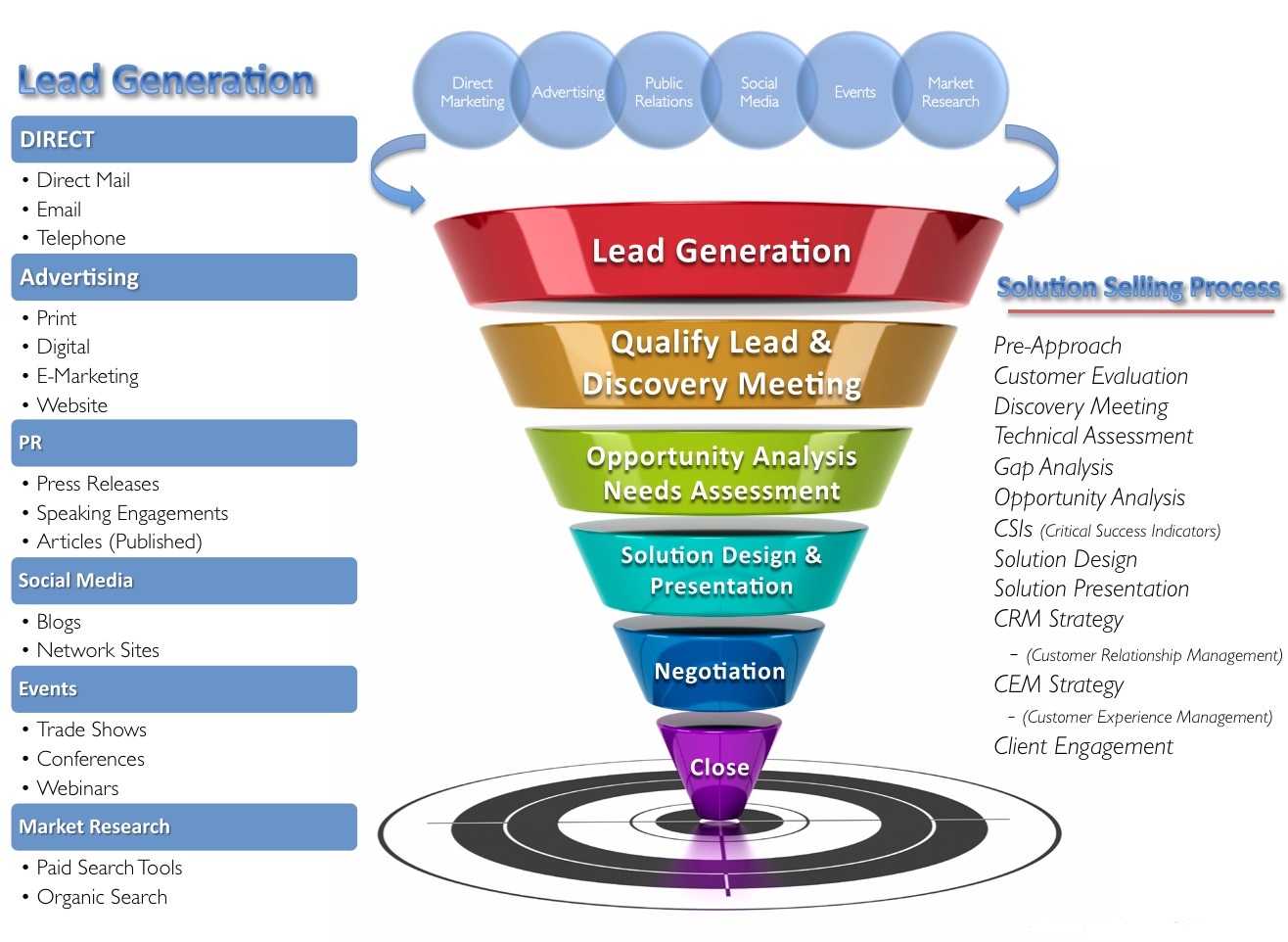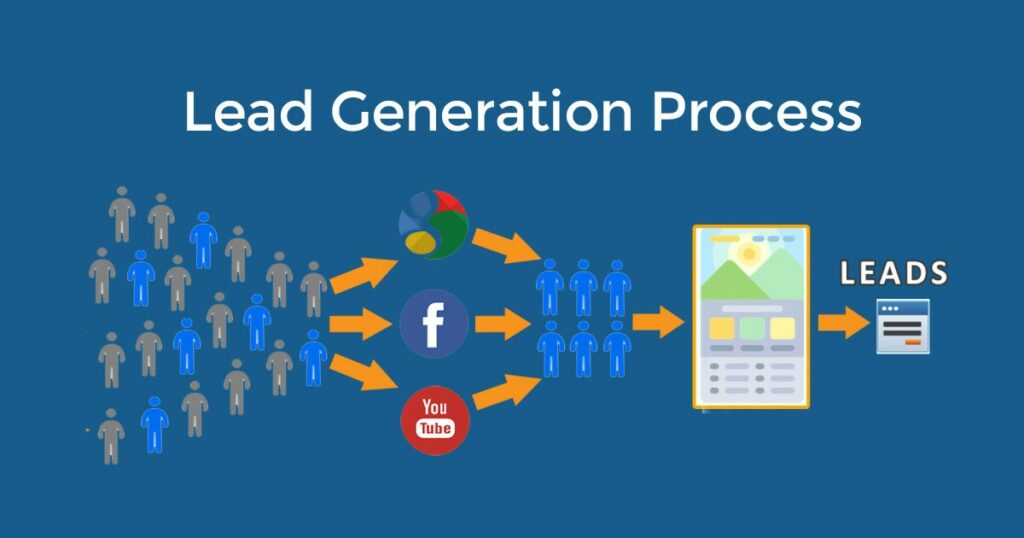Laying the Foundation: Understanding the Lead Generation Landscape
Lead generation is a crucial aspect of modern business, enabling companies to identify and engage with potential customers. When starting a lead generation business, it’s essential to understand the landscape and the various channels used to generate leads. Lead generation can be broadly categorized into two types: B2B (business-to-business) and B2C (business-to-consumer). B2B lead generation focuses on generating leads for businesses, while B2C lead generation targets individual consumers.
Several channels are used to generate leads, including social media, content marketing, and paid advertising. Social media platforms, such as LinkedIn and Twitter, provide a vast audience for lead generation. Content marketing, including blog posts, e-books, and webinars, helps to establish a company’s authority and expertise in its industry. Paid advertising, such as Google Ads and Facebook Ads, enables businesses to reach a targeted audience and drive traffic to their website.
When starting a lead generation business, it’s crucial to understand the different types of leads and how to generate them. Leads can be categorized into three types: cold leads, warm leads, and hot leads. Cold leads are individuals who have shown no interest in a product or service, while warm leads have shown some interest. Hot leads are those who are ready to make a purchase. Understanding the different types of leads and how to generate them is critical to the success of a lead generation business.
In addition to understanding the types of leads, it’s also essential to understand the lead generation process. The lead generation process typically involves several stages, including lead capture, lead nurturing, and conversion. Lead capture involves collecting contact information from potential customers, while lead nurturing involves building a relationship with them. Conversion occurs when a lead becomes a customer.
Starting a lead generation business requires a deep understanding of the lead generation landscape and the various channels used to generate leads. By understanding the different types of leads, the lead generation process, and the channels used to generate leads, businesses can establish a solid foundation for success.
Defining Your Niche: Identifying Profitable Markets and Industries
When starting a lead generation business, it’s essential to specialize in a specific niche or industry. This focus enables you to develop a deeper understanding of your target audience, tailor your marketing efforts, and establish your company as an authority in the market. A well-defined niche also helps to differentiate your business from competitors and attract high-quality leads.
To identify a profitable niche, research your target market and analyze the competition. Look for industries with a high demand for lead generation services and a relatively low level of competition. You can use online tools, such as Google Trends and Keyword Planner, to analyze market trends and identify potential niches.
Another crucial aspect of defining your niche is understanding your target audience. Develop buyer personas to identify the characteristics, needs, and pain points of your ideal customers. This information will help you create targeted marketing campaigns and develop lead generation strategies that resonate with your audience.
Some popular niches for lead generation businesses include:
- Financial services: banks, credit unions, and investment firms
- Healthcare: medical devices, pharmaceuticals, and healthcare services
- Technology: software, hardware, and IT services
- E-commerce: online retailers and e-commerce platforms
When selecting a niche, consider the following factors:
- Market size and growth potential
- Level of competition
- Target audience characteristics and needs
- Revenue potential and pricing models
By carefully selecting a niche and understanding your target audience, you can establish a strong foundation for your lead generation business and increase your chances of success.
Additionally, consider the following tips when defining your niche:
- Start with a broad niche and narrow it down as you gain more experience and insights
- Conduct thorough market research to validate your niche selection
- Develop a unique value proposition that differentiates your business from competitors
By following these guidelines and carefully selecting a niche, you can set your lead generation business up for success and establish a strong foundation for long-term growth.
Developing a Lead Generation Strategy: Choosing the Right Tactics
When starting a lead generation business, it’s essential to develop a comprehensive strategy that aligns with your goals and target audience. A well-planned strategy will help you generate high-quality leads, increase conversions, and drive revenue. In this article, we’ll explore the different lead generation strategies and tactics, including inbound marketing, outbound marketing, and account-based marketing.
Inbound marketing is a popular lead generation strategy that focuses on creating valuable content to attract and engage with potential customers. This approach includes tactics such as blogging, social media marketing, email marketing, and search engine optimization (SEO). Inbound marketing is effective for businesses that want to establish thought leadership and build trust with their target audience.
Outbound marketing, on the other hand, involves proactively reaching out to potential customers through tactics such as cold calling, email marketing, and paid advertising. This approach is effective for businesses that want to quickly generate leads and drive conversions. However, it can be more challenging to execute and may require a larger budget.
Account-based marketing is a targeted approach that focuses on specific accounts and decision-makers. This strategy involves creating personalized content and messaging to engage with potential customers and build relationships. Account-based marketing is effective for businesses that want to target high-value accounts and establish long-term relationships.
When choosing a lead generation strategy, consider the following factors:
- Target audience: What are their pain points, interests, and behaviors?
- Marketing goals: What are your lead generation goals, and how will you measure success?
- Resources: What is your budget, and what resources do you have available?
- Industry: What are the industry trends, and how can you leverage them to your advantage?
By considering these factors and choosing the right lead generation strategy, you can increase your chances of success and drive revenue for your business.
Additionally, consider the following tips when developing a lead generation strategy:
- Align your strategy with your sales process and goals
- Use data and analytics to inform your strategy and optimize performance
- Continuously test and refine your strategy to improve results
By following these guidelines and choosing the right lead generation strategy, you can establish a strong foundation for your business and drive long-term success.
Building a Lead Generation Team: Hiring the Right Talent
When starting a lead generation business, it’s essential to build a skilled and experienced team to drive success. A well-structured team will help you generate high-quality leads, increase conversions, and drive revenue. In this article, we’ll discuss the importance of hiring the right talent and provide tips on how to build a successful lead generation team.
A lead generation team typically consists of several key roles, including sales professionals, marketers, and data analysts. Sales professionals are responsible for generating leads and converting them into customers. Marketers focus on creating and executing marketing campaigns to attract and engage with potential customers. Data analysts provide insights and analysis to optimize lead generation campaigns and improve performance.
When hiring sales professionals, look for individuals with a strong track record of success in lead generation and sales. They should have excellent communication and interpersonal skills, as well as the ability to work in a fast-paced environment. Marketers should have a solid understanding of marketing principles and tactics, including social media, content marketing, and paid advertising. Data analysts should have strong analytical skills and experience with data analysis tools and software.
To attract and retain top talent, consider offering competitive salaries, benefits, and perks. Provide opportunities for professional development and growth, and foster a positive and supportive company culture. This will help you build a motivated and productive team that is dedicated to driving success.
Additionally, consider the following tips when building a lead generation team:
- Clearly define roles and responsibilities to avoid confusion and overlap
- Establish a strong team culture and encourage collaboration and communication
- Provide ongoing training and development opportunities to improve skills and knowledge
- Use data and analytics to inform hiring decisions and optimize team performance
By building a skilled and experienced team, you can drive success and growth in your lead generation business. Remember to focus on hiring the right talent, providing opportunities for growth and development, and fostering a positive company culture.
When starting a lead generation business, it’s essential to prioritize team building and talent acquisition. By doing so, you can establish a strong foundation for success and drive long-term growth and revenue.
Creating a Lead Generation Funnel: Converting Leads into Customers
A lead generation funnel is a critical component of any successful lead generation business. It’s a step-by-step process that guides potential customers through the sales process, from initial awareness to conversion. In this article, we’ll explain the concept of a lead generation funnel and provide guidance on how to create an effective one.
A typical lead generation funnel consists of three stages: lead capture, lead nurturing, and conversion. The lead capture stage involves attracting potential customers and collecting their contact information. The lead nurturing stage involves building a relationship with the lead and providing value through content and communication. The conversion stage involves converting the lead into a customer through a sale or other desired action.
To create an effective lead generation funnel, you need to understand your target audience and their needs. You should also have a clear understanding of your sales process and the steps that leads need to take to become customers. Once you have this information, you can create a funnel that is tailored to your business and your target audience.
Here are some tips for creating an effective lead generation funnel:
- Make sure your funnel is aligned with your sales process and goals
- Use a variety of tactics to attract and engage with potential customers, such as content marketing, social media, and paid advertising
- Provide value to leads through content and communication, such as email marketing and lead nurturing campaigns
- Use data and analytics to track the performance of your funnel and make adjustments as needed
By creating an effective lead generation funnel, you can increase conversions and drive revenue for your business. Remember to tailor your funnel to your target audience and sales process, and to use a variety of tactics to attract and engage with potential customers.
Some common mistakes to avoid when creating a lead generation funnel include:
- Not having a clear understanding of your target audience and their needs
- Not having a clear understanding of your sales process and goals
- Not providing value to leads through content and communication
- Not using data and analytics to track the performance of your funnel
By avoiding these mistakes and creating an effective lead generation funnel, you can drive success and growth for your business.
Measuring and Optimizing Lead Generation Performance
When starting a lead generation business, it’s essential to track and measure performance to optimize lead generation campaigns and drive revenue. In this article, we’ll discuss the importance of measuring lead generation performance and provide guidance on how to set up analytics and reporting.
There are several key metrics to track when measuring lead generation performance, including:
- Lead volume: The number of leads generated per month or quarter
- Lead quality: The percentage of leads that are qualified and ready to buy
- Conversion rate: The percentage of leads that convert into customers
- Cost per lead: The cost of generating each lead, including marketing and sales expenses
- Return on investment (ROI): The revenue generated by each lead, compared to the cost of generating it
To track these metrics, you’ll need to set up analytics and reporting tools, such as Google Analytics or a customer relationship management (CRM) system. These tools will help you collect data on your lead generation campaigns and provide insights into what’s working and what’s not.
Once you have data on your lead generation performance, you can use it to optimize your campaigns and improve results. This might involve:
- Adjusting your marketing messaging and tactics to better resonate with your target audience
- Improving your sales process and conversion rates
- Reducing costs and improving ROI
By tracking and measuring lead generation performance, you can make data-driven decisions to optimize your campaigns and drive revenue for your business.
Some common mistakes to avoid when measuring lead generation performance include:
- Not tracking key metrics, such as lead volume and conversion rate
- Not using analytics and reporting tools to collect data and provide insights
- Not using data to optimize lead generation campaigns and improve results
By avoiding these mistakes and tracking lead generation performance, you can drive success and growth for your business.
Common Mistakes to Avoid When Starting a Lead Generation Business
When starting a lead generation business, it’s essential to avoid common mistakes that can hinder success. In this article, we’ll identify common mistakes that entrepreneurs make when starting a lead generation business and provide tips on how to avoid them.
One of the most common mistakes is inadequate market research. Many entrepreneurs assume that they know their target audience and market trends, but fail to conduct thorough research. This can lead to ineffective lead generation strategies and poor conversion rates.
Another common mistake is poor team building. A lead generation business requires a skilled and experienced team, including sales professionals, marketers, and data analysts. However, many entrepreneurs fail to hire the right talent, leading to poor performance and high turnover rates.
Ineffective lead generation strategies are also a common mistake. Many entrepreneurs rely on outdated tactics, such as cold calling and email spamming, which can be ineffective and even harm the business’s reputation.
Additionally, many entrepreneurs fail to track and measure lead generation performance, which can make it difficult to optimize campaigns and improve results.
To avoid these mistakes, it’s essential to conduct thorough market research, build a skilled and experienced team, develop effective lead generation strategies, and track and measure performance.
Here are some tips to avoid common mistakes when starting a lead generation business:
- Conduct thorough market research to understand your target audience and market trends
- Hire a skilled and experienced team, including sales professionals, marketers, and data analysts
- Develop effective lead generation strategies that are tailored to your business and target audience
- Track and measure lead generation performance to optimize campaigns and improve results
By avoiding these common mistakes, you can set your lead generation business up for success and drive revenue and growth.
Some other common mistakes to avoid when starting a lead generation business include:
- Not having a clear understanding of your target audience and their needs
- Not having a clear understanding of your sales process and goals
- Not using data and analytics to inform lead generation strategies and optimize performance
By avoiding these mistakes and following best practices, you can build a successful lead generation business that drives revenue and growth.
Scaling Your Lead Generation Business for Long-Term Success
When starting a lead generation business, it’s essential to think about scaling for long-term success. As your business grows, you’ll need to expand your team, increase revenue, and maintain a competitive edge in the market. In this article, we’ll discuss the importance of scaling a lead generation business and provide guidance on how to do it effectively.
One of the most critical aspects of scaling a lead generation business is expanding your team. As your business grows, you’ll need to hire more sales professionals, marketers, and data analysts to handle the increased volume of leads. It’s essential to hire the right talent and provide them with the necessary training and support to succeed.
In addition to expanding your team, you’ll also need to increase revenue to sustain growth. This can be achieved by developing new lead generation strategies, expanding into new markets, and improving conversion rates. It’s also essential to maintain a competitive edge in the market by staying up-to-date with the latest trends and technologies.
To scale your lead generation business effectively, it’s essential to have a solid plan in place. This should include:
- Defining your target market and ideal customer
- Developing a lead generation strategy that aligns with your business goals
- Building a skilled and experienced team
- Investing in the right technology and tools
- Continuously monitoring and optimizing performance
By following these steps, you can scale your lead generation business for long-term success and achieve your goals.
Some other key considerations when scaling a lead generation business include:
- Ensuring that your lead generation strategy is aligned with your sales process and goals
- Providing ongoing training and support to your team
- Continuously monitoring and optimizing performance to ensure that you’re meeting your goals
- Staying up-to-date with the latest trends and technologies in the industry
By considering these factors and developing a solid plan, you can scale your lead generation business for long-term success and achieve your goals.






